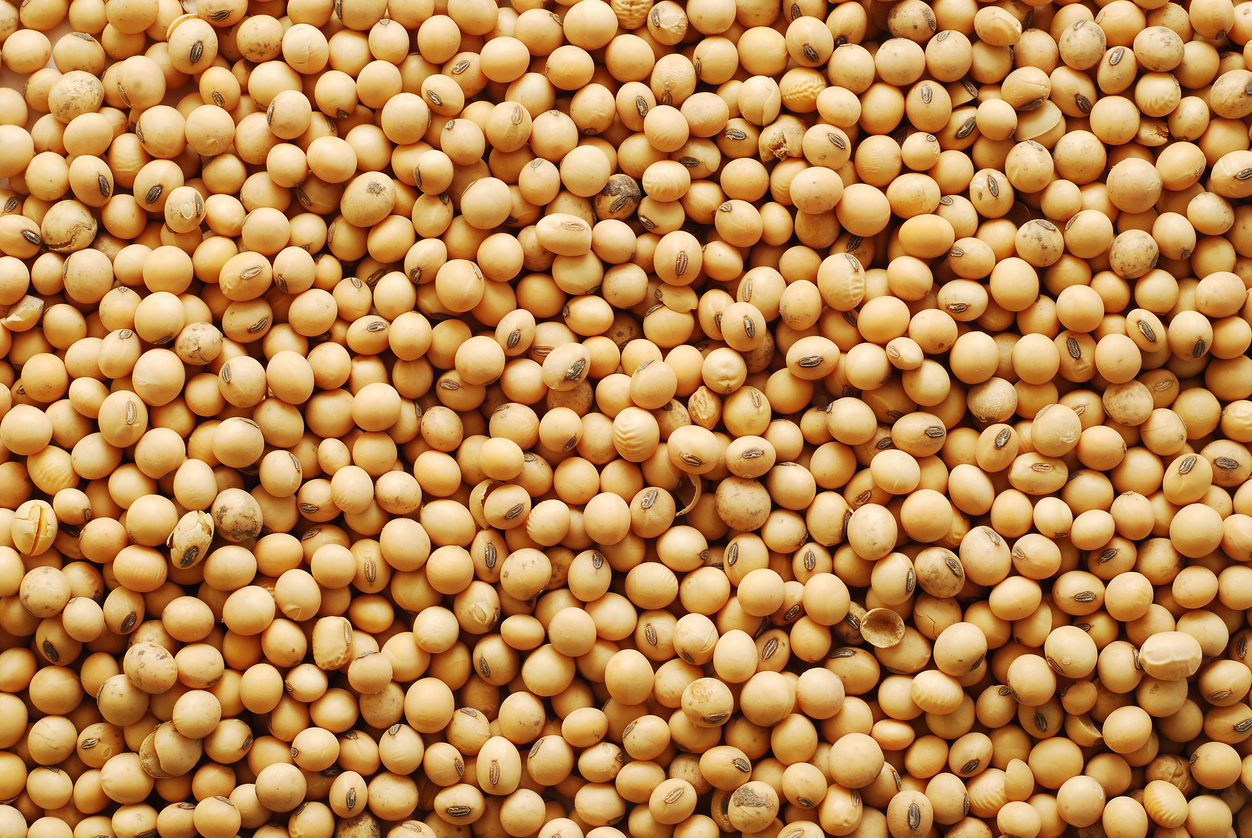Growing Your Own Soybeans in Nigeria: An Easy Guide to Buying Seeds
Growing your own soybeans in Nigeria can be an incredibly rewarding experience. Not only does it provide you with a cheap and nutritious food source, but it also supports local farmers and businesses. With the right preparation and knowledge, anyone can start growing soybeans in Nigeria. This guide will provide you with the essential information you need to purchase the right seeds, prepare the land and create the perfect environment for the soybeans to thrive. Additionally, we will discuss the potential benefits of growing soybeans, as well as provide tips and tricks for getting the most out of your crop. So if you’re ready to take control of your food production, let’s get started on this journey to growing your own soybeans in Nigeria.
Growing Your Own Soybeans in Nigeria: An Easy Guide to Buying Seeds
Growing your own soybeans in Nigeria can be an incredibly rewarding experience. Not only does it provide you with a cheap and nutritious food source, but it also supports local farmers and businesses. With the right preparation and knowledge, anyone can start growing soybeans in Nigeria. This guide will provide you with the essential information you need to purchase the right seeds, prepare the land and create the perfect environment for the soybeans to thrive. Additionally, we will discuss the potential benefits of growing soybeans, as well as provide tips and tricks for getting the most out of your crop. So if you’re ready to take control of your food production, let’s get started on this journey to growing your own soybeans in Nigeria.
Benefits of Growing Soybeans in Nigeria
Growing your own soybeans can be beneficial in many ways. For one, it is a great way to save money as soybeans are relatively inexpensive to purchase as seeds. Additionally, growing your own soybeans can support local farmers and businesses, which can help to stimulate the local economy. Furthermore, soybeans are a healthy source of protein and other essential vitamins and minerals, which can provide numerous health benefits. Finally, growing soybeans can be a great way to teach children about the importance of sustainability and where their food comes from.
Another great benefit of growing your own soybeans is that it is an easy crop to grow. Soybeans are generally hardy and can withstand minor droughts, pests, and disease. Additionally, soybeans are usually ready to harvest within a few months, depending on the variety. This makes them a great option for those who want to grow their own food but don’t have the time or resources to dedicate to a long-term crop.
How to Purchase the Right Seeds
When purchasing soybean seeds, it is important to purchase the right variety for your area. Different varieties of soybeans have different growing requirements and yields, so it is important to research which variety is best suited to your climate and soil type. Additionally, it is important to purchase seeds from a reputable source, such as a local farm or an online seed retailer. This will ensure the quality of the seeds and will help to ensure a successful harvest.
When selecting the right variety of soybeans, there are a few things to consider. First, consider the maturity date of the soybeans. This will determine when the plants will be ready for harvest, so it is important to select a variety that fits within your schedule. Additionally, consider the yield of the variety. Some varieties of soybeans produce higher yields than others, so if you’re looking for a larger harvest, you may want to select a variety with higher yield potential.
Finally, consider the disease resistance of the variety. Different varieties of soybeans are more resistant to certain diseases than others, so if you live in an area with a higher risk of disease, it may be beneficial to select a variety with higher disease resistance.
Preparing the Land and Creating the Ideal Environment
Once you have selected the right variety of soybeans, it is time to prepare the land and create the ideal environment for the soybeans to thrive. The first step is to till the soil to a depth of at least six inches. This will help to loosen the soil, making it easier for the roots to penetrate the soil and absorb nutrients. Additionally, it will help to aerate the soil, allowing oxygen to reach the roots of the plants.
Next, it is important to fertilize the soil. Soybeans are nitrogen-fixing plants, meaning they absorb nitrogen from the atmosphere and convert it into a usable form for the plants. As a result, it is important to add nitrogen-rich fertilizer to the soil to ensure the plants have access to the nutrients they need to grow. Additionally, it is important to test the soil to check for pH levels and other nutrient deficiencies. This will help you determine what additional nutrients may need to be added to the soil to create the ideal environment for the plants.
Finally, it is important to make sure the soil is well-drained. Soybeans are susceptible to root rot, so it is important to ensure the soil does not become waterlogged. If necessary, you can add compost or other organic materials to improve the soil’s drainage.
Planting the Soybeans
Once the soil is prepared and the ideal environment has been created, it is time to plant the soybeans. Soybeans should be planted in rows approximately two feet apart. The seeds should be spaced approximately two inches apart and planted at a depth of one to two inches. Once the seeds are planted, it is important to cover them with soil and water them thoroughly.
It is important to note that soybeans prefer cooler temperatures, so it is best to wait until the soil has reached a temperature of 60 degrees Fahrenheit before planting. Additionally, it is important to keep an eye on the weather forecast and be prepared to cover the plants if a hard frost is expected.
Caring for the Plants
Once the soybeans have been planted, it is important to provide them with the proper care to ensure a successful harvest. The plants should be kept well-watered throughout the season, but it is important to avoid over-watering as this can cause the plants to become waterlogged and susceptible to root rot. Additionally, it is important to weed the area regularly to keep the plants free from competition.
If the plants become infested with pests or diseases, it is important to take action immediately. There are a variety of organic pesticides and fungicides available for use, or you can try non-chemical methods such as introducing beneficial insects or planting companion plants.
Harvesting and Storage
When the soybeans are ready for harvest, it is important to harvest them at the right time. Soybeans should be harvested when the pods are dry and the leaves have begun to yellow. Once the beans have been harvested, it is important to store them in a cool, dry location. This will help to ensure the beans remain fresh and retain their nutritional value.
Common Problems and Solutions
Growing soybeans can be a rewarding experience, but it is important to be aware of the potential problems that could arise. The most common problems associated with growing soybeans include pests, diseases, and nutrient deficiencies. If these problems arise, it is important to take action immediately.
For pests, it is important to introduce beneficial insects or use organic pesticides. For diseases, it is important to use organic fungicides or rotate crops to prevent the spread of disease. Finally, for nutrient deficiencies, it is important to test the soil to determine what nutrients are lacking and add the necessary amendments to the soil.
Additional Tips for Growing Soybeans
In addition to the tips outlined above, there are a few additional tips that can help you get the most out of your soybean crop. For instance, it is important to keep the area around the plants free from weeds and other vegetation. This will help to ensure the plants are receiving all the nutrients they need and will help to prevent the spread of disease. Additionally, it is important to keep an eye on the plants throughout the season and take action if any problems arise. Finally, it is important to harvest the beans at the right time to ensure the highest quality and yield.
Conclusion
Growing your own soybeans in Nigeria can be a rewarding experience. Not only does it provide you with a cheap and nutritious food source, but it also supports local farmers and businesses. With the right preparation and knowledge, anyone can start growing soybeans in Nigeria. This guide has provided you with the essential information you need to purchase the right seeds, prepare the land and create the perfect environment for the soybeans to thrive. Additionally, we have discussed the potential benefits of growing soybeans, as well as provided tips and tricks for getting the most out of your crop. So if you’re ready to take control of your food production, you now have the knowledge and resources to get started on this journey to growing your own soybeans in Nigeria.








LEAVE A COMMENT
You must be logged in to post a comment.